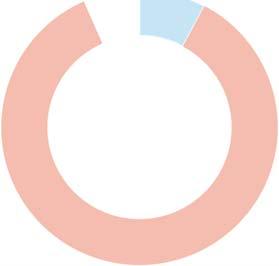
1 minute read
RESEARCH INSIGHT
Baseline study of Fairtrade Cotton in West Africa
The study was commissioned in 2015 by Fairtrade to look at the impact of Fairtrade
Using a sample of Fairtrade and non-Fairtrade SPOs and farmers, the study found that Fairtrade had a positive impact in the areas of higher price services to women, overall access to training, social project investments, and internal control systems. For example, farmers in Fairtrade training, and were more likely to have policies relevant to gender and young people. There was yields (conventional only), food insecurity, and vulnerability. The study recommends that Fairtrade invests more in farmer support and in improving market access for increased Fairtrade cotton sales.
Aidenviroment (2015)
civil society. Together they are striving to improve the social and environmental conditions in textile production globally – from the production of raw materials for textile production to the disposal of textiles.
Advocating for a more sustainable cotton sector

Political advocacy has been another important area of work to defend the interests of vulnerable cotton farmers and promote the take-up of Fairtrade cotton. To this end, Fairtrade engaged with industry experts to research and develop a position paper called ‘Power to West African cotton producers.’4 This mapped the challenges in the cotton sector in West Africa with a focus on small producers and put forward recommendations for the European Union, G7 and the governments of West African countries in support of fairer and more sustainable textile supply chains. Fairtrade also hosted a Cotton
Forum in Paris in March 2016 focusing on advocacy and market access to improve the conditions of West African Fairtrade cotton producers. Representatives from the industry, commercial partners, supply chain and small producers all participated.
4 Fair Trade Advocacy, ‘Power in West African Cotton Sector’. Available at: http://www.fairtrade-advocacy.org/power/180-projects/ power-in-supply-chains-campaign/889-power-in-the-west-african-cotton-sector-2016



